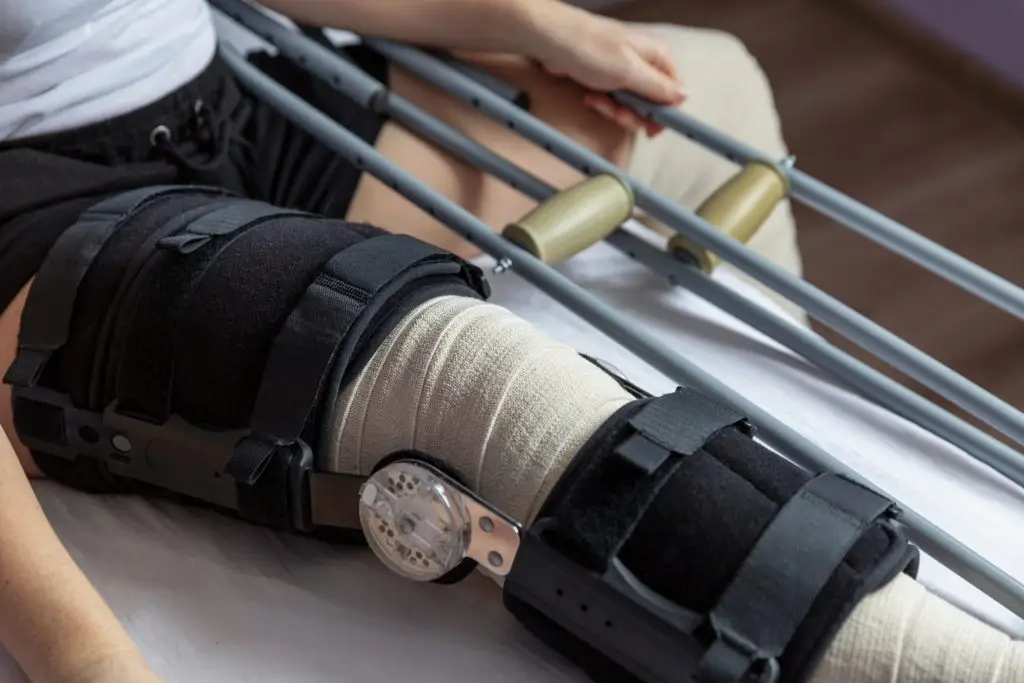Recovering from total knee replacement is important, setting the foundation for your long-term mobility and quality of life. Performing physical therapy exercises consistently and keeping your mind focused on the long-term benefits, is the key to ensuring a successful outcome for years to come.
1. Not going to physical therapy
Physical therapy is the most important part of the recovery process after your knee replacement surgery. It’s not just about getting you moving again as quickly as possible—it’s about re-training your muscles, allowing your knee to heal, and restoring strength and function.
Why it’s a mistake
Skipping physical therapy appointments or not following through with your home exercise program can be the difference between a good and bad outcome. Even during a break of just a day or two, you can lose valuable time in regaining range of motion and appropriate muscle control, delaying your recovery.
The solution
Stick to your physical therapy schedule and assigned home exercise program. Each session is tailored to your specific needs along the timeline of recovery, gradually introducing exercises that restore movement and minimize stiffness. You can stay motivated by setting small, achievable goals, and remember that consistency is more important than overexertion.
2. Not recovering properly
It’s natural to want to get back to your normal routine as quickly as possible after surgery. You may feel good one day and want to get back to your normal activities, but progressing too quickly can set you back on the road to recovery.
Why it’s a mistake
Overusing your knee while it’s healing can lead to increased swelling, extended discomfort, and slower healing. Your knee needs more time than you might think to adjust to the replacement, and adequate rest is important to allow that process to take place.
The solution
Alternate your physical therapy exercises with periods of rest to avoid overuse. Elevating your knee and using ice as directed by your physical therapist can help control swelling and stiffness. Stay hydrated by drinking plenty of water throughout the day and eating a well-balanced diet can promote your healing.
3. Not moving your knee enough
On the flip side, some patients fall into the trap of avoiding movement altogether after surgery. The fear of causing more pain or damage can lead people to not move their knee at all, which can compromise recovery.
Why it’s a mistake
Your body is incredibly adaptive. If your knee isn’t kept active during the healing process, your body may essentially “learn” that your knee doesn’t need to move to function. Over time, this can result in stiffness, reduced flexibility, and even reduced blood flow to the area.
The solution
It’s essential to regain range of motion for the best long-term outcome, so keep your knee moving regularly, especially in the early days after surgery. Low-impact movements like bending, straightening, and gentle walking—as recommended by your therapist—help send signals to your body that your knee needs to stay strong and flexible. The more you move within safe parameters, the better your long-term mobility will be.
4. Not taking medication as prescribed
We understand that medication can seem like a double-edged sword. On the one hand, it helps manage post-surgery pain, but on the other, dependency and side effects are real risks. In the end, though, ignoring prescribed pain relief often does more harm than good.
Why it’s a mistake
Pain management isn’t just about comfort—it’s a vital part of recovery. Uncontrolled pain can prevent you from staying active and completing your physical therapy program. It may also increase stress and fatigue, both of which can hinder the healing process
The solution
Discuss any concerns you have about medications with your surgeon. They may be able to offer alternatives or adjust your dosage if needed. Trust the advice of your care team and use pain relief as a tool to enable therapeutic movement, and ask about sustainable pain reduction techniques that you can utilize in the future.
5. Not enjoying a new lease on life
For many patients, getting a knee replacement means freedom from the pain and limitations that have held them back for years. However, some may become so focused on preserving and protecting their new knee that they forget to appreciate what lies on the other side of recovery: a fresh start.
The downtime after surgery should allow patients to reflect on what they want their renewed life to look like. This is a great time to not only dream about the future, but also start making real, beneficial habits as you progress through post-op care and rehabilitation.
Why it’s a mistake
A knee replacement is an investment in your health and quality of life. Missing the opportunity to make lifestyle changes, enjoy newfound mobility, or pursue long-postponed goals can leave you feeling stuck, even after a successful surgery.
The solution
Take time to understand and make new goals for what your new knee allows you to do. Whether it’s playing pickleball, dancing at a family wedding, or just strolling through the park, find joy in the possibilities. Build healthy habits like regular exercise, better posture or movements, and a balanced diet to preserve your new knee and start this next chapter on a strong note.
Post-op physical therapy you can rely on
Your knee replacement can be the beginning of a better, more active life, but the road to recovery requires focus, patience, and commitment. Avoiding these common mistakes after knee replacement surgery can put you on the path to success, ensuring your new knee serves you well for years to come.
If you or a loved one is getting ready to have this life-changing procedure, we’re excited and hope for the best possible outcome. At Alves & Martinez Physical Therapy & Athletic Performance, we’re passionate about helping people get back to their desired lifestyle. If you’re looking for a physical therapist for your post-op care, don’t hesitate to call our East Sacramento or Elk Grove clinic, or request an appointment online today.
